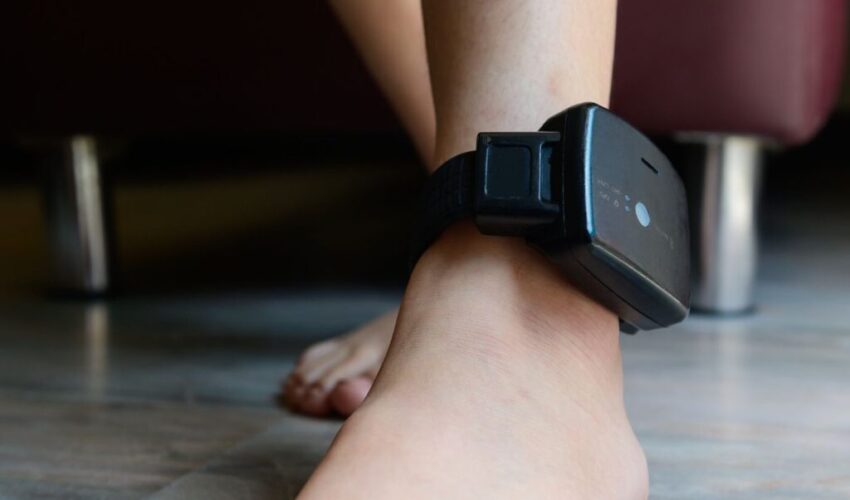The Ultimate Guide to Ankle Monitors: Prison Facts

Published September 25, 2023
For some criminals, an ankle monitor is an alternative to incarceration. It has become a way to track them until they go to trial. It has the superb ability to send specific location data. It helps law enforcement to be vigilant where the perpetrator is.
Ankle monitors are generally locked onto the ankle of the perpetrator. These devices are made to stay there. And it is for a set time frame. In most cases, they can’t be removed, except under the supervision of a police officer.
The United States has the highest incarceration rate in the world. It is why it is said that ankle monitors are a great alternative to imprisonment. They also believe that they are part of the solution to the overcrowded prisons in the country.
Let’s go over the interesting facts surrounding ankle monitors. What exactly are they, how do they work, what crimes need one, types, and rules? Read further to be educated. Let’s begin.
What Is an Ankle Monitor?
An ankle device is a form of electronic tagging. It is a surveillance means affixed to a person. It is similar to a bracelet. It is inclined to the lower leg just above the ankle. It allows tracking an individual for various reasons. It is either through global positioning or radio frequency.
When installed, the monitor is locked onto the person. It will allow law enforcement for 24/7 tracking. These devices are used for those subjected to house arrest. Also, as a condition of parole, or for other situations. It may also be used to measure the wearer’s alcohol usage. It is the case for punishing alcohol-related offenses.
Ankle monitors also constantly transmit information to the on-site receiver. This information transfers to the agency that is charged with monitoring it. A signal will arise if it indicates that the wearer is not where they are supposed to be. A signal is then transferred to the local law enforcement agency.
How Does an Ankle Monitor Work?
When the court orders one to wear an ankle monitor, they set the parameters of the sentence. It is no different to someone who is incarcerated. The difference lies with the ankle monitor wearer being tracked. It is no matter where they are. Also, at all times.
In most scenarios, the court of jurisdiction will calibrate it. They will confine the person to their home, only a short distance around it. It will depend on the condition of their release from incarceration. How restricted they intend to be will also influence it.
Once the monitor is set up, it will begin tracking the location of the individual. Usually, it is done via GPS or radio frequency. Law enforcement will know just where the individual is at all times.
Ankle monitors contain a GPS chip and a SIM card. These components identify the offender. They maintain track of their location. Together, they create a closed circuit. If the offender tries to remove the monitor, this circuit breaks. It then triggers an alarm for law enforcement.
If the wearer violates the orders of the device, a signal will be sent. It communicates to the monitoring center and the local law enforcement. The violations are maybe not being in the desired location and the device not being charged. Also, attempting to tamper it more.
What Crimes Require an Ankle Monitor?
1. DUI (Driving Under the Influence)
In certain states, individuals convicted of DUI may be ordered to wear an ankle monitor. It is a condition for their sentence.
2. Serious Crimes
Murder, sexual assaults, major drug offenses, and other violent crimes. These serious offenses may result in the court ordering the defendant to wear an ankle monitor. They call for major monitoring and supervision. It is because of the extent of their crimes.
3. Sex Offenses
Sex offenders may also be required to wear ankle monitors. It is usually for their probation and parole conditions. It is done to monitor their movements. Also, to ensure compliance with restrictions and regulations.
4. Flight Risks
Individuals who are flight risks. Those have a higher likelihood of evading law enforcement. Lastly, escaping custody. These are required to wear ankle monitors.
5. House Arrests or Community Control
Ankle monitors are commonly used for individuals placed on house arrest. Moreover, on those under community control as an alternative to incarceration. It permits authorities to watch their location. It also ensure compliance with designated restrictions.
6. Immigration Issues
In some immigration dilemmas, the governing agency may assign one to wear an ankle monitor. It is an alternative to waiting for deportation in a detention center. This case may apply to those who are not a danger to society. Also, those permitted to roam within certain areas until they have a day in court.
How Far Can You Go With an Ankle Monitor?
The court of jurisdiction determines the distance a person can go with an ankle monitor. It is anchored based on the overall reason for the sentence. Also, the distinct conditions of the sentence.
Suppose the person is convicted to house arrest. The individual is not allowed to leave the money at all. In these scenarios, the ankle monitor usually has a length of no more than 150 feet.
Suppose others are permitted more freedom. The court of jurisdiction may enable them to move about the community at greater distances. There are usually specific conditions that apply to this type of confinement. Still, they are monitored closely. Here are some reasons individuals may permit themselves to move around at greater distances.
- Attending rehabilitation or demanded meetings
- Medical visits
- Traveling to and from the workplace
- Attending religious facilities
- Required visits to parole officers
A judge will set specific times of the day that an individual can be away from home. These times are usually designated during the work day. It also does not contain any nighttime travel.
Types of Ankle Monitor
1. GPS (Global Positioning System)
A GPS is a radio navigation system. It is used on land, sea, and air. It is employed to regulate the exact location, time, and velocity. And works irrespective of weather conditions. It is highly commendable for its accuracy in pinpointing an individual’s location. GPS ankle monitors are helpful for those who are confined to a specific geographical area.
These devices can track and then transfer the exact location of an individual. And with at any given time. It is helpful for those criminals permitted to work.
2. RF (Radio Frequency)
This type of ankle monitor is less precise than a GPS. Still, it can pinpoint the general location of the individual. It is due to still relating to their on-site receiver. It doesn’t give an exact location. What it renders instead is the range of the receiver.
RF ankle monitor is employed when it is not necessary to know the exact location of where the individual is at all times. In most cases, these criminals have more freedom. They are those permitted to roam designated areas for periods.
3. Scram Ankle Monitor
A scram ankle monitor is a scram bracelet and alcohol monitor. It is worn by a DUI offender 24 hours a day and seven days a week. It tests sweat for the wearer’s blood alcohol concentration.
It is used to monitor DUI offenders long term. It is also often employed to repeat DUI offenders. Such as those for second or third offenses. The court ordered them to avoid alcohol as part of their sentence.
Rules for Wearing Ankle Monitor
1. Keep a job
One typical rule for wearing an ankle monitor is to maintain work. Inmates are permitted to leave prison and live at home. And it is for a chance to reintegrate them into society. Keeping a job is necessary. It is because wearing an ankle monitor costs money monthly.
Ankle monitor wearers are not generally allowed to leave their set boundaries. But, traveling to and from the workplace is essential. Thus, the court issues a tracking system where the person has a job. It allows travel to the workplace at designated hours.
Losing the job further can result in an end to the agreement. In this case, it means sending the offender back to incarceration.
2. Abide with agreed schedule.
When a person receives an ankle monitor from the court, the court approves the location for travel. Some common sites are:
- Church
- School
- Work
- Healthcare Establishments
- Meeting with your probation or parole officer
- Rehabilitation centers
- Place for community service
The sentence will also comprise a curfew and a schedule. Any travel to these locations outside set hours could result in an alert from the device.
3. Pay all court fees.
The court permits an individual to live with an ankle monitor on house arrest. It is on the condition that they reimburse all the court fees. This arrangement is like paying bail. In times of failure to pay, it will send them to prison.
4. Meet with parole or probation officer.
The conditions for house arrest require mandatory meetings with the parole or probation officers. These meetings differ based on the offenses the individual is guilty of. Also, their unique needs.
For example, these meetings could address:
- Employment
- Living situation
- Counseling meetings and mandatory rehabilitation
- Drug and alcohol tests
- Personal physical and mental health
- Court hearings
5. Abstain from drugs and alcohol
Offenders must live a clean life. It is especially true for those convicted of drug and alcohol-related offenses. A GPS ankle monitor ensures convicts stay within the boundaries of their sentence. Yet, some monitors have built-in alcohol and drug detection.
If deemed necessary, the offender must take regular drug tests. It is to ensure they abide by the following terms of their house arrest. They may demand of rehabilitation and counseling. The two support moving past alcohol and drug-related crimes.
6. Don’t tamper with the monitor.
The most critical rule about wearing an ankle monitor is not attempting to remove it. There is no reason to take off the monitor. It is waterproof and tamper-resistant. Ankle monitors are also designed to know when offenders are tampering with them.
If an offender removes theirs, the monitor will send alerts to law enforcement immediately. They then will locate and arrest the offender. This type of offense directs to a loss of the house arrest agreement. Then, they will incarcerate the offender.

ADVERTISEMENT
Frequently Asked Questions About Ankle Monitor
1. What happens if you go out with an ankle monitor?
The consequences can vary if you go out with an ankle monitor. It depends on the circumstances and the conditions set by the court. If you go outside the permitted boundaries, an alarm can be triggered, notifying the monitoring personnel. The consequences can include various penalties. These may be additional charges, release revocation, increased supervision, and severe legal penalties. It may result in fines and potential jail time, too.
2. Can you sleep with an ankle monitor?
You can sleep with an ankle monitor. These devices are crafted to be worn continuously, including slumber hours.
3. Can ankle monitors hear?
No. Ankle monitors are not crafted to hear or record audio. They only use GPS technology to track the wearer’s location and movement. They do not have the feature to listen to conversations and capture audio.
4. What can you not do with an ankle monitor?
When wearing an ankle monitor, the main thing not to do is leave designated areas. An ankle monitor has boundaries on where you’re supposed to be. Going outside places you’re allowed without prior authorization is a violation. Removing, tampering with, or attempting to deactivate it is also generally prohibited. Doing so will only end in legal consequences and additional charges.
And now you’re guided on what are ankle monitors. We have established that these devices are alternatives to literal jail times. They are employed to restrict some places they can go and are tracked 24/7.
Reduce Your Jail Call Costs By Up To 90% Per Minute With GlobalTel
GlobalTel’s inmate calling service lowers jail call per minute rates by up to 90% for jail calls from US facilities. Sign up now and use the special jail call phone number we create for you to eliminate the long distance jail call fees. Try GlobalTel for only $45.99 for 90 days. Make US/domestic and international jail calls at the local rate and stay connected to your incarcerated loved ones for less. Learn more about how to sign up for calls from inmates here.

This Content Is Fact Checked
Our esteemed team of specialists has thoroughly validated the accuracy of this information. Discover further details about the rigorous editorial guidelines for our website here.
ADVERTISEMENT

About The Author
I am Tracy Gorman, a seasoned writer with a passion for crafting content on various subjects. I possess the expertise to delve into any niche and deliver exceptional articles.




